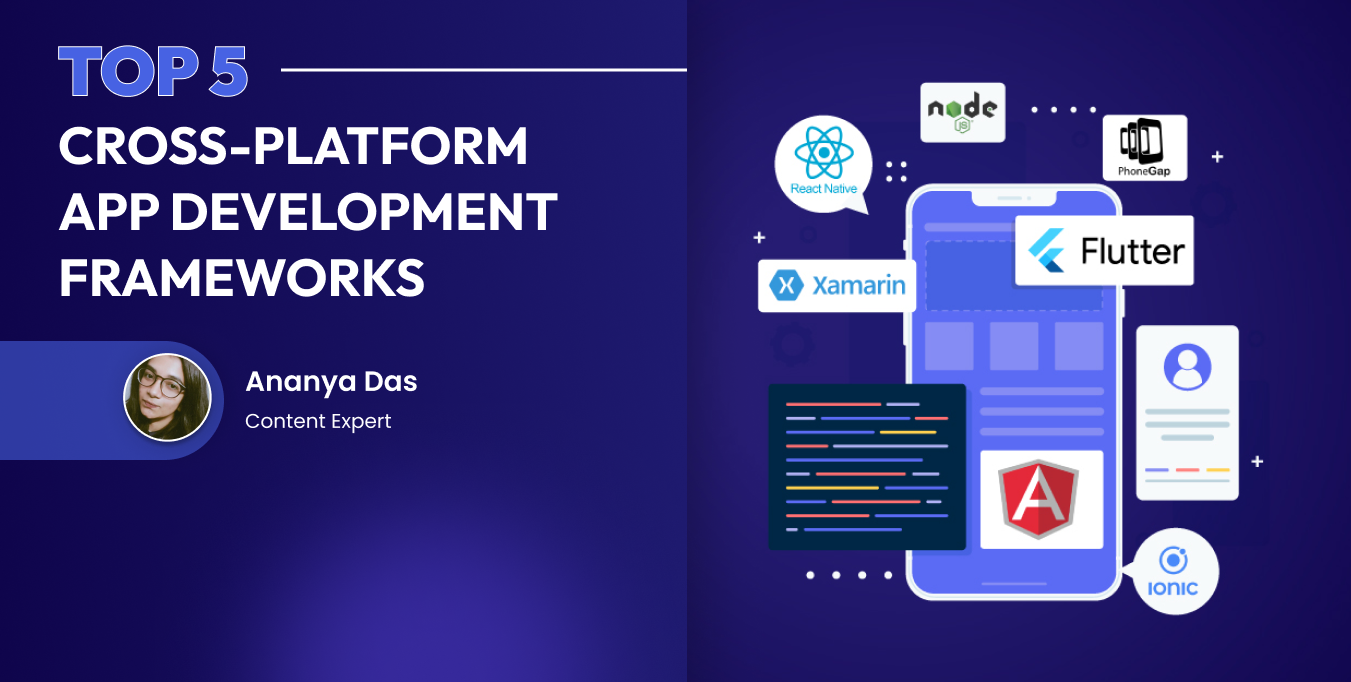Ready to kick off your mobile app creation adventure? Choosing the right cross-platform app development framework is your first major decision. It can be daunting to decide from all the options that are available for us for our mobile app framework. It's like picking the perfect travel companion for your journey into the world of app development. There’s a lot of information out there that can lead us down a potentially good path but not with the consideration of the outside factors of these frameworks. We will break down each framework in this article and all the relevant aspects associated with it.
What are Cross-platform app Frameworks?
Imagine Cross-platform app development frameworks as magic toolkits for development, unlocking the power to create apps that smoothly run on various devices and systems, all from a single codebase. While Native apps are developed for a certain platform, cross-platform apps were introduced to operate on multiple platforms. The benefits of cross-platform app frameworks are they allow the developers to write the code once and deploy it for multiple operating systems. With simpler maintenance and lower cost, developers get faster launch of the final product and larger exposer.
In this guide, we'll break down the big players in 2024 - Flutter, React Native, Xamarin, Unity and Cordova - in a way that even beginners can grasp. Get ready for a crash course on choosing the ultimate tech sidekick for your app adventure. Let's dive in and make your app dreams a reality!
1. Flutter: Where Stunning Design Takes the Stage
Imagine your app's design stealing the spotlight on both iOS and Android platforms. That's Flutter's superpower! Developed by Google, it's all about creating eye-catching, consistent user interfaces. What's more? Flutter's hot-reload feature lets you see changes instantly, making it a playground for developers who love to iterate quickly.
Consider Flutter if:
- You're all about creating a jaw-dropping user interface.
- Fast development and quick tweaking are your jam.
- Dart (Flutter's programming language) is up your alley.
Now let’s break down the benefits of flutter:
- Visually stunning and consistent UI across iOS and Android.
- Hot-reload feature for quick development and tweaking.
- Dart programming language proficiency is required.
2. React Native: The Facebook-Backed All-Star
Say hello to React Native, the all-star backed by Facebook. If you're into JavaScript and React, you're in for a treat. This framework lets you build apps that feel native, without diving into the native code. Plus, with a massive community and a treasure trove of plugins, React Native is like having a superhero team for your project.
Consider React Native if:
- Your team is buddies with JavaScript and React.
- Customisation and a bustling community are on your checklist.
- You're aiming for near-native performance without the native code hassle.
The benefits of React-native are:
- Utilises JavaScript and React for near-native performance.
- Extensive community support and a vast ecosystem of plugins.
- Ideal for teams familiar with JavaScript and React.
3. Xamarin: Microsoft's Code Magic Potion
Enter Xamarin, the code magician in the Microsoft universe. If your team speaks C# and .NET, this might be your ticket to cross-platform success. Xamarin offers a native-like performance and cosy integration with Microsoft services, making it a sweet deal for those deep into the Microsoft ecosystem.
Consider Xamarin if:
- Your team is fluent in C# and . NET.
- Seamless integration with Microsoft services is non-negotiable.
- You're after that buttery-smooth native-like performance.
Let's look into the benefits that we get by using Xamarin:
- Uses C# and .NET for a native-like performance.
- Seamless integration with Microsoft services.
- Best suited for teams proficient in C# and . NET.
4. Unity - A complete toolkit for Designing and Building Games
Unity is your go-to for all-in-one development - be it apps, games, or AR, it's got you covered. With Unity, you write your code once, and it seamlessly runs on iOS, Android, and Windows - talk about simplifying! Plus, you're not alone; Unity comes with a vibrant community ready to share tips, tricks, and support, making your journey into app development a collaborative and enjoyable experience.
Consider Unity if:
- You seek versatile development for games, apps, and more.
- Writing code once and deploying anywhere is your goal.
- Being part of a vibrant and supportive community matters.
Now, explore the enchanting benefits Unity brings:
- Revel in stunning visuals that bring your app to life.
- Enjoy cross-platform harmony, effortlessly reaching diverse users.
- Embrace a user-friendly experience, perfect for beginners and pros alike.
- Experience real-time testing, refining your app instantly.
Unity isn't just a framework; it's your passport to a world where imagination meets functionality. Ready to dive in? Start coding!
5. PhoneGap/Cordova: The Web Dev's Secret Weapon
Meet PhoneGap, the secret weapon of web developers diving into the app world. Powered by Apache Cordova, it lets you use your web skills (HTML, CSS, JavaScript) to craft mobile magic. While it might not match native performance, it's a wizard at simplifying development, making it a fantastic choice for rapid prototyping.
Consider PhoneGap/Cordova if:
- You want to unleash your web development skills on mobile.
- Speedy development and easy prototyping are your goals.
- Your app's performance demands aren't through the roof.
Now for the framework PhoneGap/Cordova, we will discover the specific benefits:
- Leverages web technologies (HTML, CSS, JavaScript) for cross-platform development.
- Ideal for reusing web development skills in mobile app development.
- Great for rapid development and prototyping, though performance may not match native solutions.
The landscape of cross-platform app development in 2023 is thriving with innovation, and developers have a lot of options to choose from. The top 5 frameworks discussed- Flutter, React Native, Xamarin, Unity, and Cordova represent cutting-edge technology, offering a balance between efficiency, performance, and versatility. As the demand for seamless user experiences across various devices continues to rise, these frameworks empower developers to create robust applications efficiently. Whether it's the rich UI of Flutter, the familiarity of React Native, the .NET capabilities of Xamarin, or the immersive experiences of dynamic features for crafting 2D and 3D Games with Unity, each framework brings unique strengths to the table.
Being a leading software service provider, we specialise in offering comprehensive services tailored to both Flutter and React Native frameworks. From expert development to unified integration, we're committed to delivering top-notch solutions that empower your business in the dynamic world of mobile app development. As we celebrate the one-year milestone of exploring the technological landscape, it is evident that cross-platform development frameworks will remain instrumental in shaping the future of app development, fostering collaboration across platforms and delivering exceptional user experiences. Here's to another year of innovation and growth in the dynamic dimension of cross-platform app development! Happy coding




